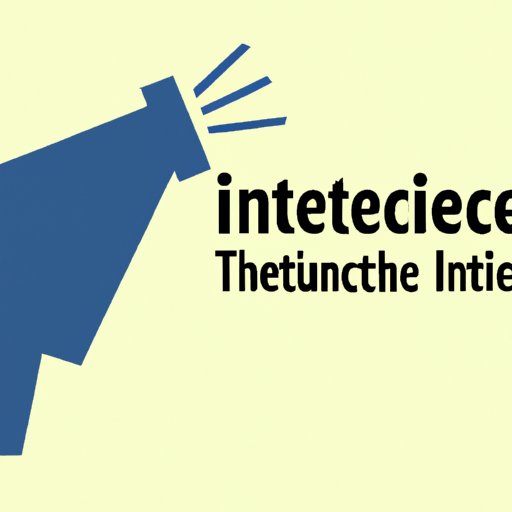
I. Introduction
Rhetoric is the art of using language to persuade or influence an audience, and it has been used for centuries in various fields, including politics, business, education, and more. In this article, we will discuss what a rhetorical strategy is, why it is important, and how it can be used to achieve success.
II. Mastering The Art of Persuasion: Understanding The Fundamentals of Rhetorical Strategy
Rhetorical strategy is a set of techniques used to persuade or influence an audience. It involves using language effectively to appeal to their emotions, values, and beliefs. Understanding rhetorical strategy is important because it can help you communicate more effectively, build stronger relationships with others, and achieve your goals.
A successful rhetorical strategy has several key elements, including a clear understanding of the audience, a strong message that resonates with their values and beliefs, and a well-structured argument or narrative that leads to a desired outcome.
III. The Power of Persuasion: How Rhetoric Shapes Our Perception of Information
Rhetoric has the power to shape our perception of information. It can influence how we interpret the facts and what we believe to be true. Throughout history, rhetoric has been used to achieve various goals, from inspiring armies to win wars to fostering social change.
For example, Martin Luther King Jr.’s “I Have a Dream” speech used powerful and persuasive language to inspire change, while advertisements often use rhetoric to sell products and services. Rhetoric has also been used in political speeches, debates, and media to sway public opinion and influence elections.
IV. The Ultimate Rhetorical Strategy Guide: Learn The Top Techniques Used by Experts
Experts often use specific rhetorical strategies to persuade or influence their audiences. These techniques include using emotional appeals, establishing credibility, using fear or guilt tactics, and more. To effectively use these techniques, one must be aware of the audience’s needs and values, and choose the right strategy for the situation.
Some tips for using these techniques include using specific examples to make a point, providing evidence to support claims, and using storytelling to create a connection with the audience.

V. Rhetoric: The Language of Influence And Its Role in Contemporary Communication
Rhetoric is still prevalent in contemporary communication, including in various industries such as advertising and marketing, public relations, and politics. Companies use rhetoric to persuade customers to buy their products or services, while politicians use it to persuade voters to support their policies and campaigns.
Rhetoric in contemporary communication includes using social media, videos, and other forms of media to reach audiences. Companies have also developed brand narratives that use specific language and images to appeal to the emotions and values of their target audience.
VI. Demystifying Rhetorical Strategy: An Essential Guide To Effective Communication
To create an effective rhetorical strategy, there are several steps to follow. First, it’s essential to have a clear understanding of the audience, including their values, beliefs, and perspectives. Next, the message needs to be tailored to the audience’s needs and values.
The structure of the argument or narrative should be well-organized and easy to follow, and should include supporting evidence to strengthen the argument. Finally, the language used should be powerful and persuasive, evoking emotions and connecting with the audience.
These steps can be applied in various communication settings, including public speaking, writing, and interpersonal communication. By demystifying the process of rhetorical strategy, we can create clearer and more effective communication.
VII. The Psychology of Rhetoric: An Examination of The Art of Persuasion
Persuasive communication is not just about the language used, but also about understanding the psychological principles behind how people make decisions and respond to language. These principles include cognitive biases, the use of social proof, and the role of emotions in decision-making.
By understanding these principles, we can create more effective rhetorical strategies that appeal to the audience’s emotions, desires, and values. Persuasion is not just about convincing someone to change their mind, but about creating a lasting and meaningful connection with them.
VIII. From Aristotle to Trump: A Brief History of Rhetoric and Its Applications Today
Rhetoric has a long history, dating back to Ancient Greece, where it was first studied by philosophers such as Aristotle. Through the centuries, it has been used by leaders, politicians, and other influencers to achieve various goals.
Today, rhetoric is used by various leaders and politicians, including former US President Donald Trump. His speeches and social media posts often use rhetorical strategies to appeal to his audience’s values and beliefs. However, rhetoric can also be used for social change, as seen in the Black Lives Matter movement and other social justice campaigns.
IX. Conclusion
Rhetorical strategy is an essential tool for effective communication and persuasion, with a long and influential history. By understanding the key elements of an effective rhetorical strategy and the psychological principles behind persuasive communication, we can create clearer, more effective messages that resonate with our audience. Whether we are writing a speech, creating an advertisement, or communicating with others, a mastery of rhetorical strategy can help us achieve our goals and build stronger connections with those around us.





